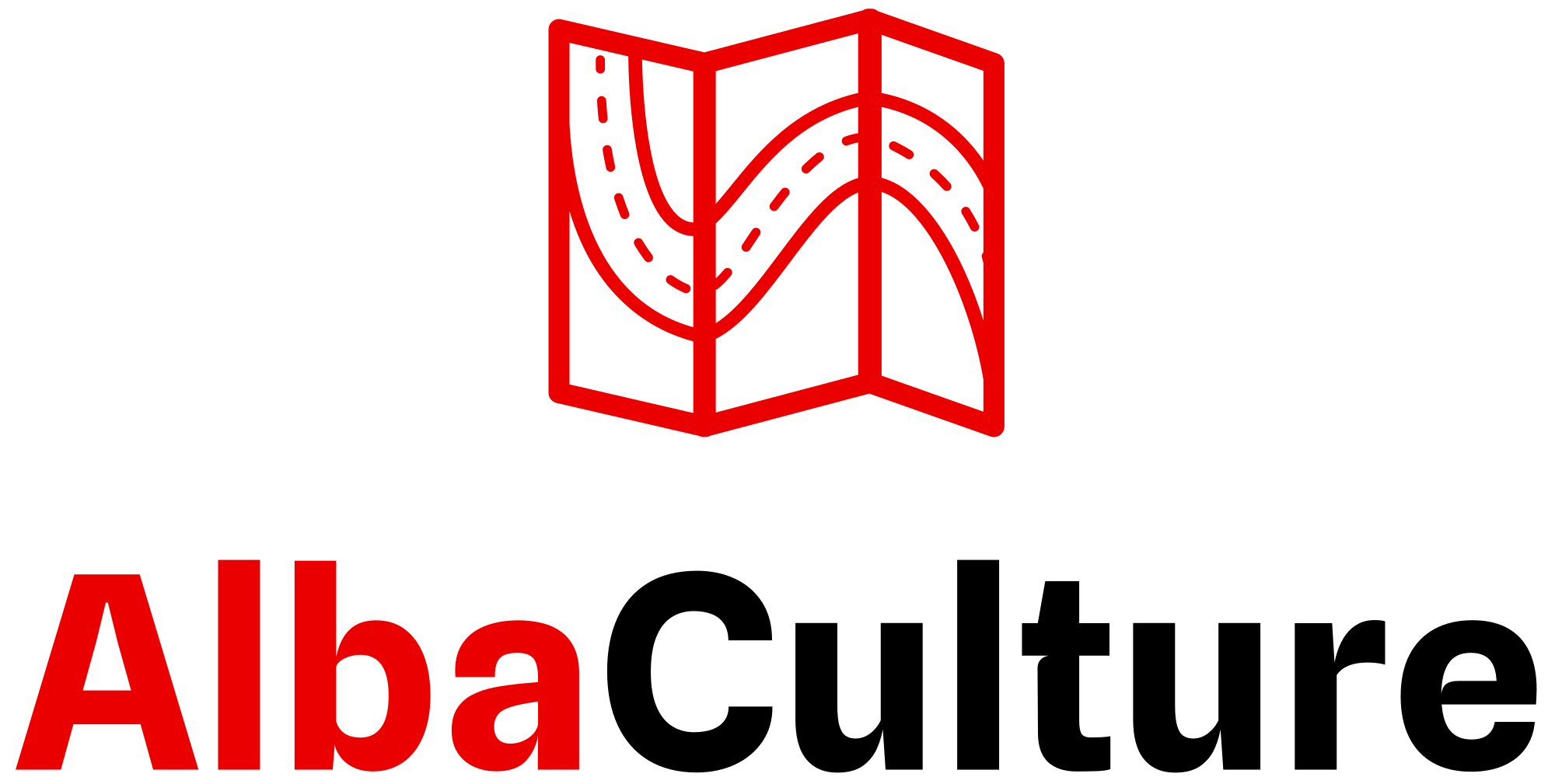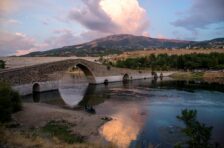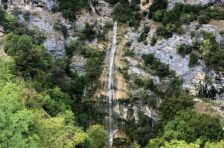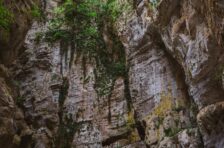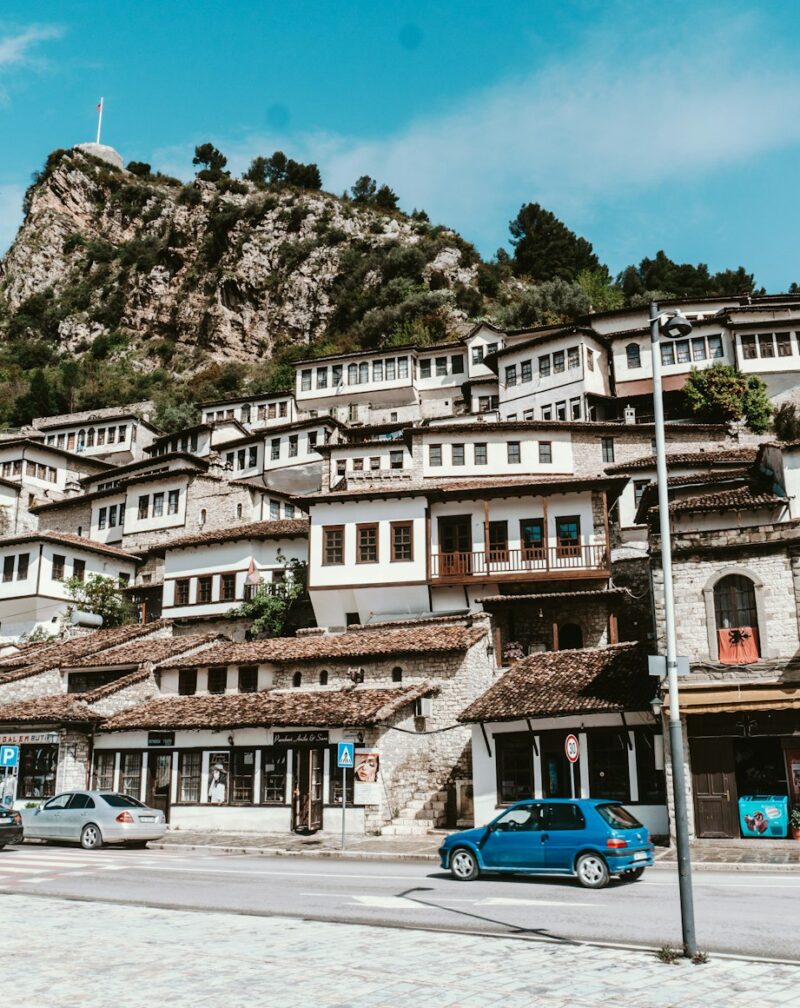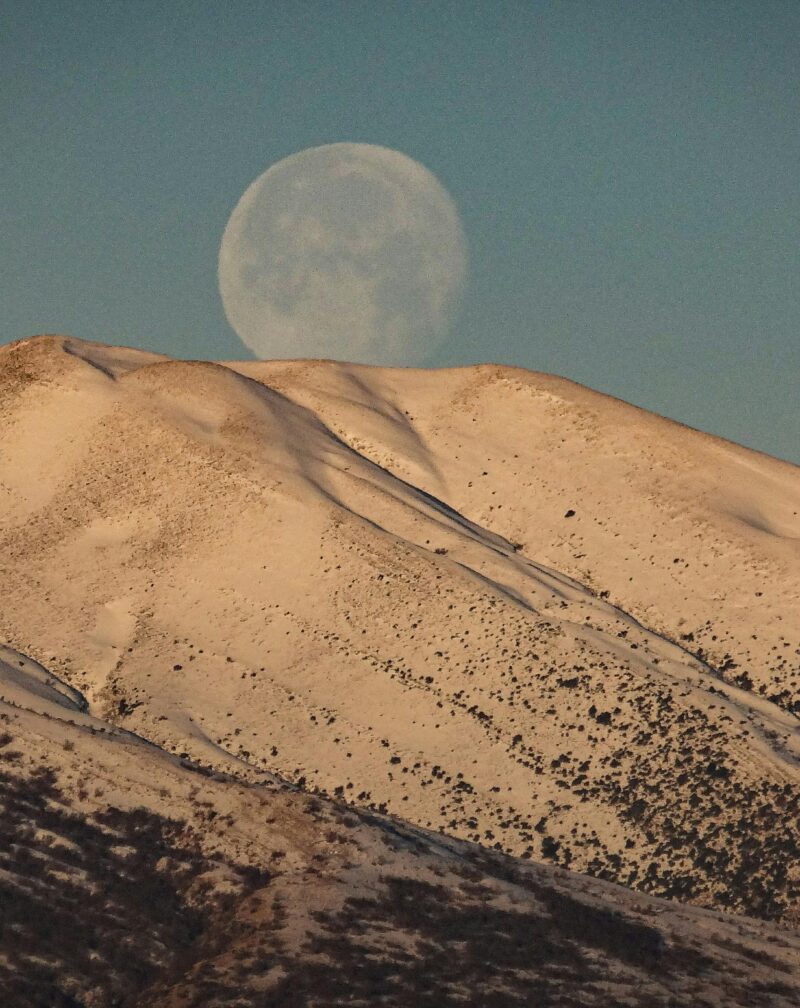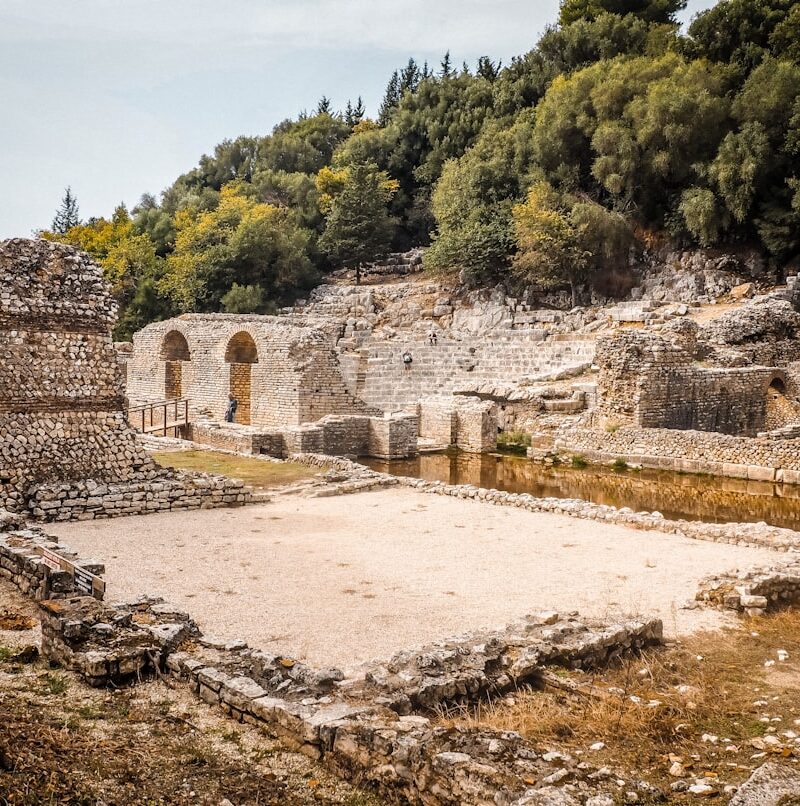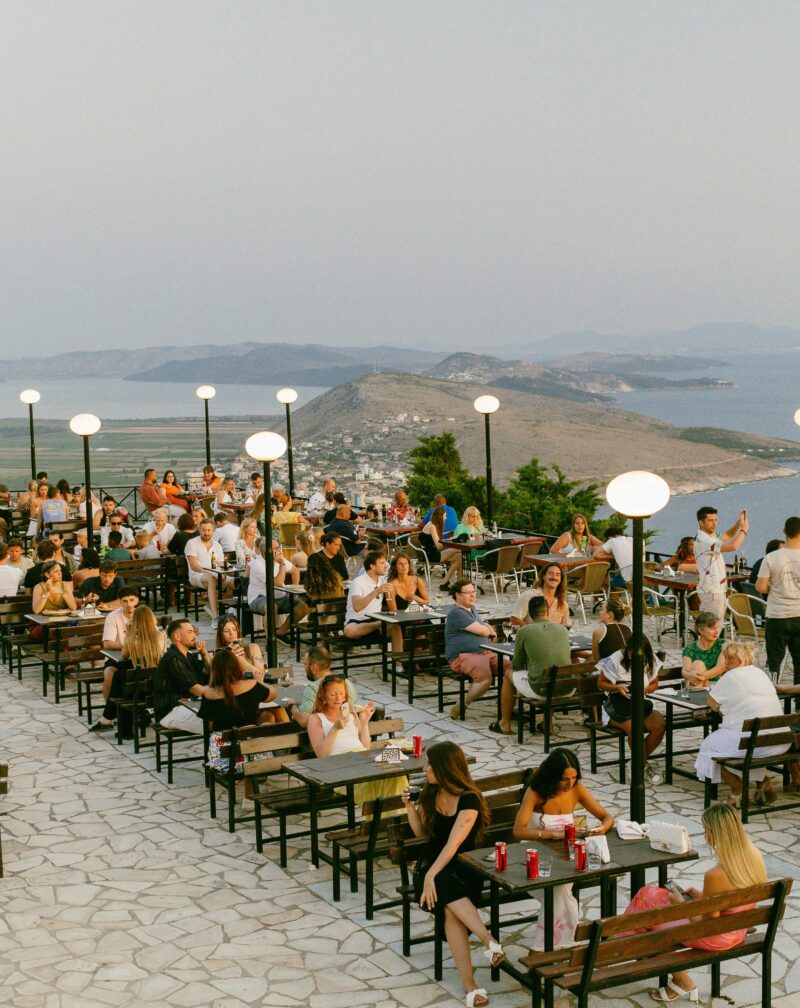What to Actually Bring to Albania
Packing for Albania depends heavily on when you’re visiting and what you plan to do. A beach holiday in August requires completely different items than exploring mountain villages in November. That said, some things prove useful regardless of season.
Clothing Basics
Spring (April-June) Layers work best. Mornings and evenings can be cool, particularly in April, while afternoons warm up nicely. Bring:
- Light sweater or fleece
- Long pants and shorts
- T-shirts and light long-sleeved shirts
- Light jacket or windbreaker
- One warmer layer for mountain areas
Weather can shift quickly in spring. I’ve experienced sunny mornings turn rainy by afternoon more times than I can count. A packable rain jacket earns its space in your bag.
Summer (July-August) Think hot. Very hot. Especially in inland valleys and southern regions.
- Light, breathable clothing
- Shorts and light dresses
- Sun hat with brim
- Swimsuit (or two if you’re on the coast)
- Light scarf or shawl for religious sites
- One long-sleeved shirt for sun protection
- Light pants for evenings (mosquitoes)
Evenings cool down slightly but remain warm. You probably won’t need anything heavier than a light cardigan, if that.
Autumn (September-November) Similar to spring but potentially cooler, especially as you move into November.
- Mix of short and long sleeves
- Sweater or fleece
- Waterproof jacket
- Long pants (jeans work fine)
- Closed-toe shoes that can handle rain
September still feels like summer. By November, you’re looking at actual autumn weather with more frequent rain.
Winter (December-March) Cold in the north and mountains, milder on the coast. If you’re sticking to coastal areas:
- Warm jacket or coat
- Long pants
- Sweaters and long sleeves
- Waterproof outer layer
- Warm socks
For mountain areas or extended time outdoors, proper winter gear matters—gloves, hat, insulated jacket. Tirana gets snow occasionally but doesn’t maintain freezing temperatures constantly.
Footwear
This matters more than you might think. Albanian streets, particularly in historic areas, feature cobblestones, uneven surfaces, and significant walking.
Comfortable walking shoes are essential. Not just comfortable-ish or broken-in-recently. Actually comfortable for 5-10 kilometers of daily walking. Athletic shoes work. Broken-in hiking shoes work. Those cute but slightly uncomfortable sandals? They’ll destroy your feet by day two.
For beach destinations, flip-flops or sandals make sense. Many beaches are pebbly rather than sandy, so water shoes help if you’re particular about walking on stones.
If visiting religious sites or fancier restaurants, one pair of slightly nicer shoes (not sneakers) proves useful, though Albania isn’t formal.
Sun Protection
The Mediterranean sun is no joke. Even in spring or autumn, UV levels surprise people from northern climates.
- Sunscreen with high SPF (bring from home—local options exist but you might prefer your usual brand)
- Sunglasses with UV protection
- Hat with a brim
- Lip balm with SPF
Albanian sun feels stronger than you expect, particularly at archaeological sites or beaches where shade is limited. Reapply sunscreen more often than you think necessary.
Modest Clothing for Religious Sites
Mosques and some churches require covered shoulders and knees. Shorts, tank tops, and short skirts won’t work.
A light scarf or shawl serves multiple purposes: sun protection, religious site coverage, warmth in over-air-conditioned spaces. Women might need head covering at some mosques, though tourist-visited mosques often provide scarves.
Men should wear long pants for mosque visits. Shorts might be acceptable at some churches but not mosques.
Backpack or Day Bag
You’ll want something for daily excursions. A comfortable backpack or crossbody bag for carrying:
- Water bottle
- Sunscreen and hat
- Light jacket or sweater
- Camera or phone
- Snacks
- Guidebook or maps
- Any purchases
Pickpocketing isn’t rampant but exists. A bag that closes securely and sits in front of you makes sense in crowded areas.
Tech and Electronics
Adapters Albania uses European two-pin plugs (Type C and F), 220V. If you’re from North America, the UK, or anywhere not using European standards, bring adapters. Some hotels have USB ports, but don’t count on it.
Phone Your phone works in Albania on international roaming, though charges can be steep. Local SIM cards are cheap and available at the airport or mobile shops. Vodafone, Telekom Albania, and ALBtelecom are the main providers. A tourist SIM with data might cost 1,000-1,500 lek (€10-15) for a couple weeks.
Camera Albania is photogenic. Whether you use a phone or dedicated camera, bring enough storage capacity. Historic sites, beaches, mountains—you’ll take more photos than expected.
Power Bank Useful for long days out, especially if using your phone for maps, photos, and translation. Hotels don’t always have convenient outlets, and some buses or shared taxis lack charging options.
Medications and Health Items
Bring prescription medications in original packaging, plus copies of prescriptions. Pharmacies stock common over-the-counter drugs, but finding your specific brand might be difficult.
Consider bringing:
- Pain relievers (headache, general pain)
- Antihistamines (allergies, bug bites)
- Anti-diarrheal medication (just in case)
- Motion sickness tablets (Albanian roads wind)
- Any prescription medications you take regularly
- Basic first aid items (bandages, antiseptic)
Insect repellent for summer evenings, particularly near water. Mosquitoes exist, though malaria doesn’t.
Hand sanitizer and tissues. Public restrooms vary in quality and don’t always stock toilet paper.
Toiletries
Standard toiletries are available in Albanian shops and pharmacies. If you’re particular about brands, bring from home. Otherwise, buying shampoo, soap, toothpaste, etc., locally works fine.
Sunscreen and feminine hygiene products are sometimes more expensive in Albania or available in limited varieties. Bringing adequate supply makes sense.
Water Bottle
A reusable water bottle cuts costs and plastic waste. Tap water in cities is generally drinkable but many prefer bottled water. Having your own bottle means buying large bottles and refilling rather than purchasing small bottles constantly.
Small Towel
Hotels provide towels, but a small quick-dry travel towel proves useful for beaches, unexpected swimming opportunities, or hostel stays.
Laundry
Most hotels offer laundry service, though it can be expensive. Mid-range accommodations might have washing machines available. Budget travelers might do sink laundry, in which case a bit of travel detergent and a clothesline or clips help.
For longer trips, pack clothes that mix and match easily. Albania isn’t particularly fashion-conscious for tourists—clean and appropriate matters more than stylish.
Money and Documents
Keep these on your person or in hotel safes, not in checked luggage:
- Passport with at least 6 months validity
- Credit/debit cards (ideally from two different banks)
- Some euros as backup cash
- Travel insurance documents
- Copies of important documents (stored separately or digitally)
- Emergency contact information
Optional but Sometimes Useful
Binoculars For birdwatching at lakes or detailed viewing of architectural elements in castles and churches.
Guidebook Despite smartphones, physical guidebooks have advantages—no battery to die, easier to browse, can make notes. Lonely Planet and Bradt cover Albania well.
Translation App Google Translate works offline if you download Albanian ahead of time. Useful for menus, signs, and basic communication.
Lock For hostel lockers or securing luggage in budget accommodations.
Earplugs Hotels in cities can be noisy. Albanian buildings sometimes lack sound insulation.
Snacks from Home If you have specific dietary needs or favorite snacks not available locally, bringing some makes sense. Albanian food is good but not particularly diverse in smaller towns.
What Not to Bring
Too Much Clothing You’ll wear less than you pack. Most people can manage on a week’s worth of clothing even for longer trips, doing laundry once or twice.
Expensive Jewelry Leave valuables at home. There’s no need for expensive watches, jewelry, or accessories that create stress about loss or theft.
Hiking Boots (Unless Hiking) If you’re doing serious mountain hiking, boots make sense. For general tourism including mountain villages, regular walking shoes suffice and pack smaller.
Hair Dryer Most hotels provide them. If yours doesn’t, they’re available in local shops cheaply rather than taking space in luggage.
Guidebooks for Other Countries Pack light on books. You can access most information digitally if needed.
Packing Style
Backpack versus suitcase depends on your travel style. If you’re moving between cities frequently, a backpack offers more flexibility, especially given cobblestone streets. For staying put in one or two places, wheeled luggage works fine on paved areas.
Packing cubes help organize, particularly if you’re visiting different climate zones and need to access specific items without unpacking everything.
Roll clothes rather than folding to save space and reduce wrinkles.
The Reality Check
You’ll probably overpack. Most people do. You can survive Albania with remarkably little—comfortable shoes, appropriate clothes for the weather, sun protection, and basic toiletries cover 90% of needs. Everything else is convenient or specific to your plans.
Albanian shops sell most things you might need. Forget your toothbrush? Buy one locally. Need an umbrella? Available everywhere. The only items difficult to find are highly specific brands or prescription items.
When in doubt, pack less. You can always acquire things there if needed, but you can’t easily get rid of excess baggage once you’re traveling.



